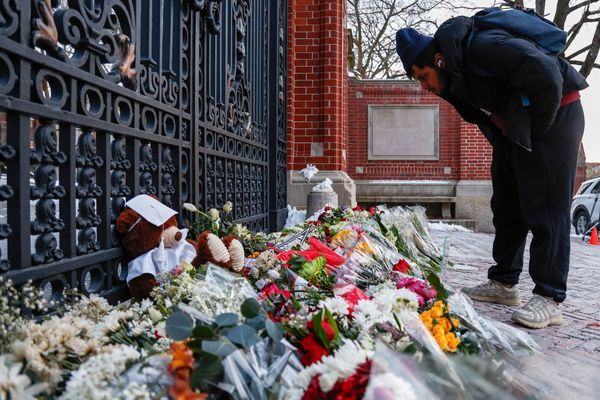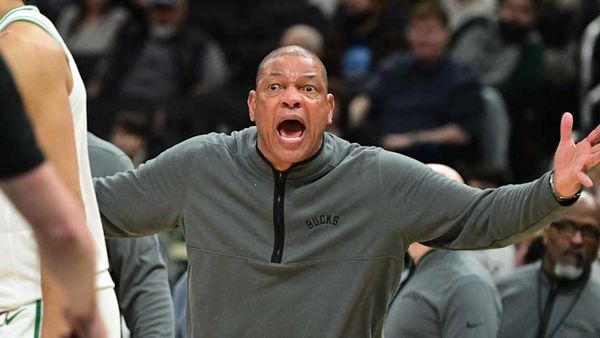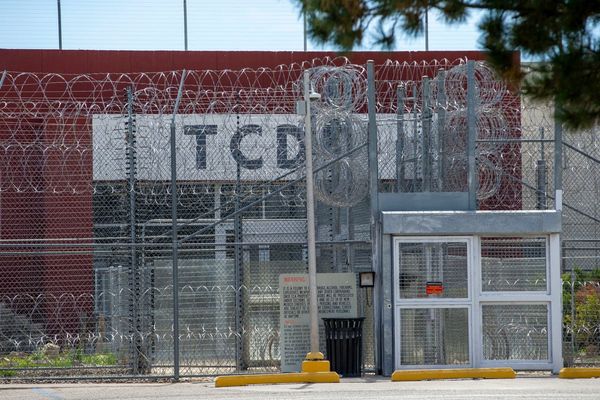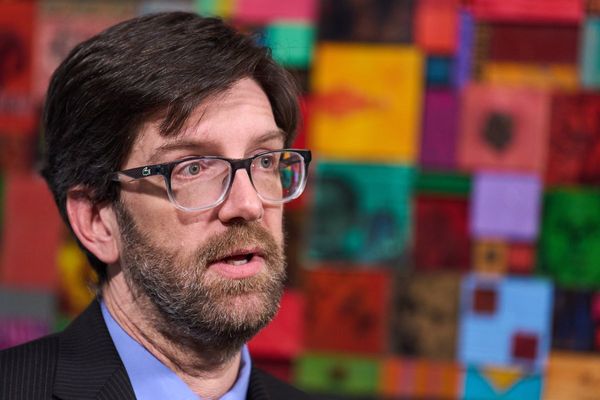The number of Australian journalists hit by law enforcement while covering ongoing immigration protests in Los Angeles has increased to three, with reporters for the ABC, the New York Times and Nine affected.
Lauren Day, the North America correspondent for the ABC, was caught in the crossfire of police action on Tuesday LA time – this time from pepper pellets – after a “scary and stressful” incident on Monday night when she and her cameraman were sprayed with teargas. The camera operator was shot in the chest with a less-lethal bullet in the first incident.
Day told Guardian Australia that “we’ve had some more issues today with getting caught in the crossfire – this time with pepper pellets”.
Pepper pellets are projectiles which burst open on impact, releasing powdered capsicum spray.
“It certainly puts you on edge knowing things can turn at any moment and the fact that you’re press is no protection to getting caught up in the chaos,” Day said.
“I’ve reported from the Middle East five times since 7 October and also from Myanmar during the civil war there, so I’m not unfamiliar with risk and conflict in my work, but I never expected the kinds of scenes we’re witnessing in the United States in 2025.”
Earlier, Day told the ABC she and her cameraman were teargassed when protests escalated following a long standoff with police on Monday. The experience was “extremely unpleasant”, she said.
“All of a sudden, we heard large bangs and the crowd started running. I then felt the unmistakable burn of teargas – first in my eyes, then in my nose, lips and throat,” Day reported for the ABC.
“It really stings your entire face and makes it difficult to breathe until the point you almost want to throw up.”
The camera operator was a freelancer and not an Australian. He escaped injury when hit in the chest.
“He was thankfully wearing a Kevlar vest at the time so was totally uninjured and didn’t even wake up with a bruise,” Day told Guardian Australia.
“We didn’t see what he was hit by but I’m just grateful whatever it was didn’t strike his neck or face where it might have really done some damage.”
Less-lethal bullets can cause fatal injuries if they hit people in the neck or face, and LAPD officers are instructed not to fire at certain parts of the body or from close range.
Australian journalist Livia Albeck-Ripka, who works for the New York Times, said she was also hit in the torso by a munition fired by law enforcement while covering the protests.
“Officers began firing crowd-control munitions in our direction, and I was hit below my ribcage. It was a pretty intense, instant pain, I felt winded,” she said in a video for the New York Times. “I was really lucky because I was not seriously injured, I just have a nasty bruise.”
Albeck-Ripka, originally from Melbourne, was hit on Sunday night US time.
• Sign up for Guardian Australia’s breaking news email
On Friday, a series of immigration raids across the city prompted several mostly peaceful protests around the city. On Saturday, Donald Trump sent in the national guard, in a move condemned by the California governor, Gavin Newsom, as “purposefully inflammatory”.
Since the deployment of the national guard, tensions have escalated with large crowds gathering in downtown centres. There have been reports of protesters throwing rocks, garbage and other objects at police and of police deploying teargas and firing less-than-lethal munitions. A curfew has been declared.
The Australian prime minister, Anthony Albanese, has condemned the actions of an officer who shot Nine journalist Lauren Tomasi with what the network said was a rubber bullet.
Tomasi was describing the situation in LA on Sunday, when an LAPD officer turned and took aim in her direction before firing his weapon.
Albanese has said the footage of Tomasi being shot was “horrific” and he had raised his concerns with the US government.
The LAPD said it was investigating the use of excessive force by officers – in an apparent reference to Tomasi.
The Los Angeles police chief, Jim McDonnell, said the LAPD was aware and “very concerned” about media being hit with crowd-control munitions.
“I know that situation you’re referring to, with the member of the media. We saw that, we’re very concerned about it and we’re looking into that,” he said this week.
The less-lethal weapons being deployed by the LAPD include teargas, pepper pellets, pepper spray and flash bangs, which produce an ear-piercing bang and bright light.
The LAPD has said the department does not use “rubber bullets” but rather foam rounds – a condensed sponge projectile resembling a hard Nerf pellet – designed to cause pain on impact without penetrating the skin.
They also use bean bag rounds, which are small cloth bags filled with lead or rubber pellets. These are designed not to penetrate skin but cause an impact hard enough to render a target temporarily immobile.
The British news photographer Nick Stern was injured on the weekend while covering the protests. He believed he was hit by a less-than-lethal round shot by deputies.
“I’m walking around taking photos … when I felt a mighty pain in my leg. I put my hand down and felt a lump kind of sticking out the back of my leg,” he told the Guardian. He underwent emergency surgery.
– Additional reporting by Reuters
• This article was amended on 11 June 2025. The headline on an earlier version stated four Australian journalists had been impacted. The ABC later confirmed its cameraman was not Australian.







